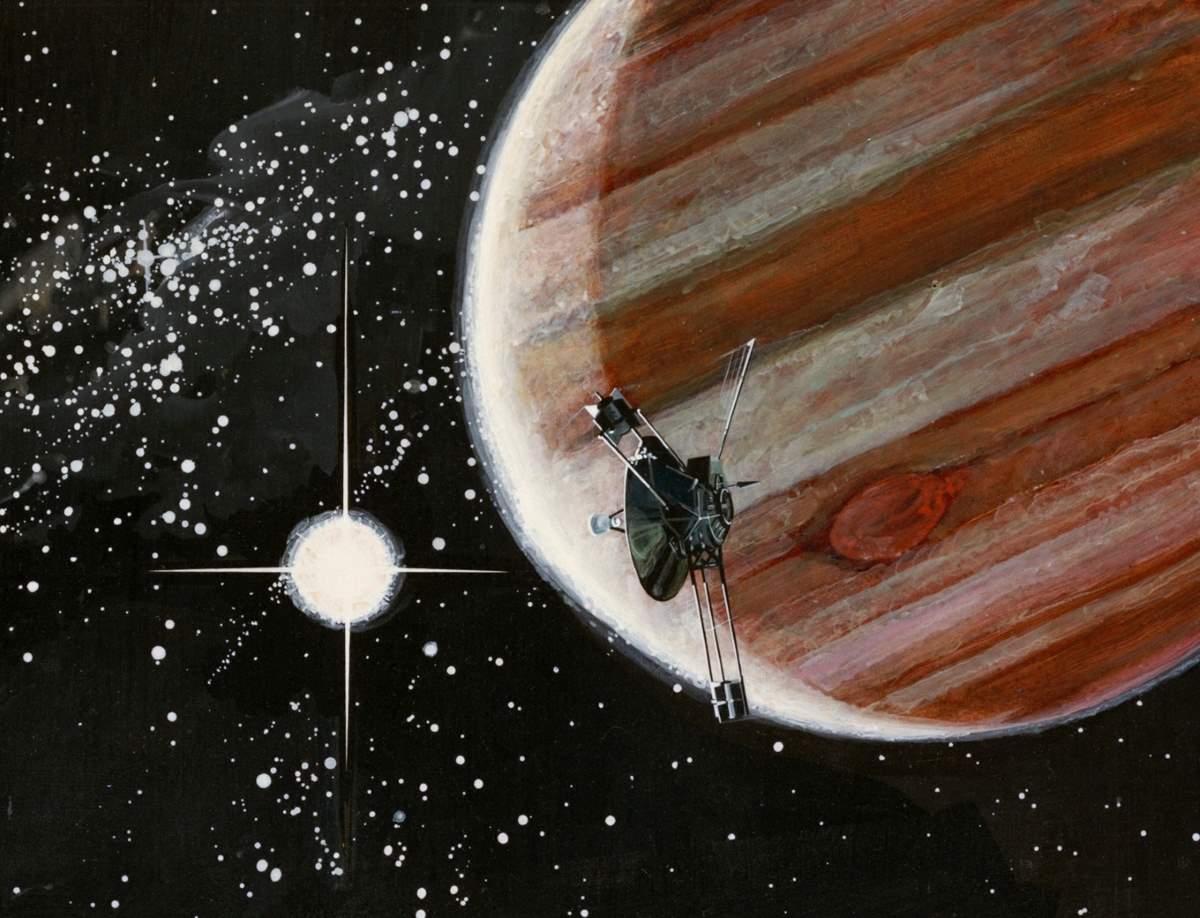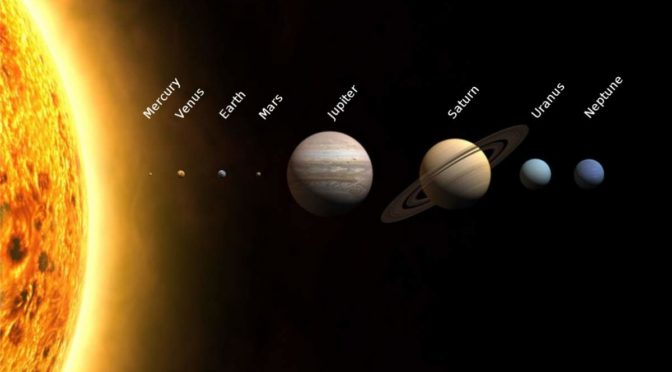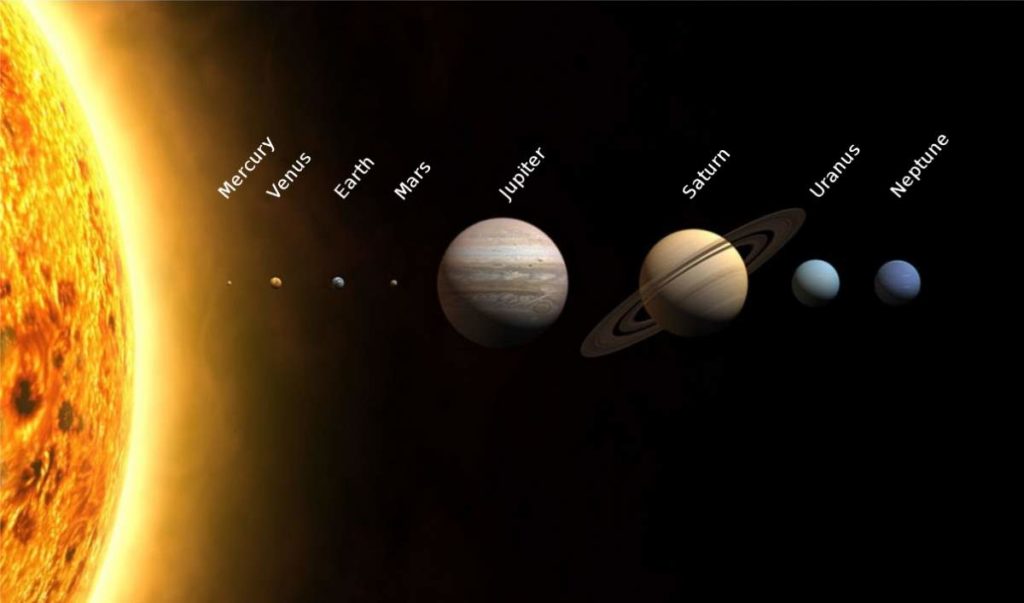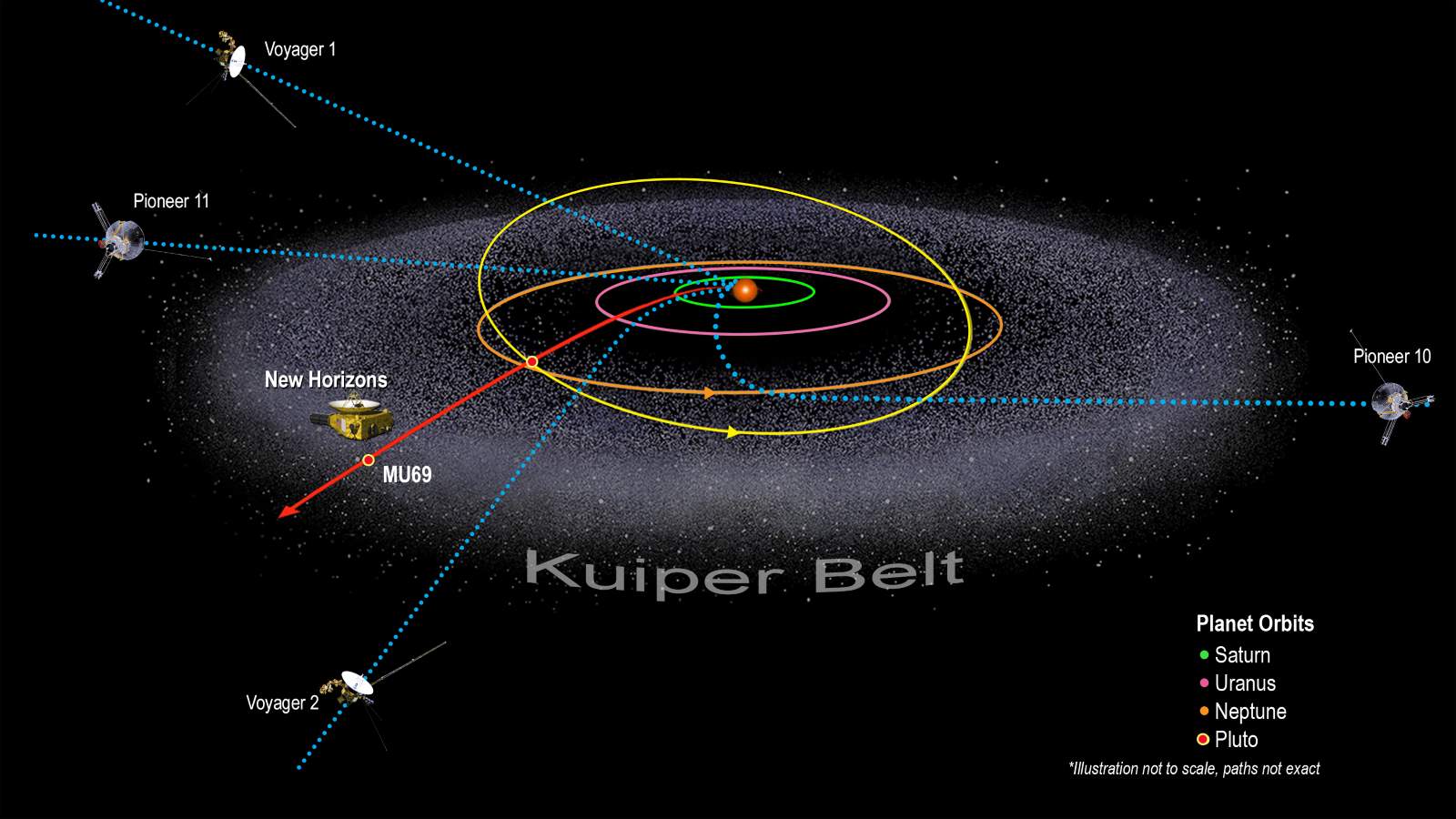Previously I posted two articles titled “If The Moon Were Only 1 Pixel – A Tediously Accurate Map Of The Solar System“, and “A Scale Model of Solar System Drawn in the Desert and the Result is Stunning“. In these posts, science enthusiasts have shown the scale of the solar system realistically. Since the human brain cannot deal with really large numbers, these articles provide an amazing way to understand how big actually our Solar System is.
Now, I decided to put the Solar System into scale as an infographic. You can see the scale of the Solar System below, the planets’ distances from the Sun, and the first flybys over them. Plus some statistics about the planets and our home planet, the Earth. Planet sizes are not scaled since they’d be too small to be seen at this scale.
The scale of the Solar System

The First Flybys of Planets
- Mercury: Mariner 10 (NASA), March 29, 1974. Mariner 10 was a robotic space probe launched by NASA on November 3, 1973, to fly by the planets Mercury and Venus. It was the first spacecraft to perform flybys of multiple planets.
- Venus Mariner 2 (NASA), December 14, 1962. Launched on August 27, 1962, Mariner 2 was the first spacecraft to successfully encounter another planet, passing as close as 21,607 miles (34,773 kilometers) to Venus after 110 days of flight.
- Earth: Giotto (ESA), July 2, 1990. Launched on 2 July 1985, European Space Agency’s Giotto robotic spacecraft was the first deep-space mission to change orbit by returning to Earth for a gravity-assist manoeuvre. In 1986, it passed closest to the nucleus of a comet, Halley. Its images showed for the first time the shape of a comet nucleus and found the first evidence of organic material in a comet.
- Mars: Mariner 4 (NASA), July 15, 1965. Launched on November 28, 1964, Mariner 4 was the fourth in a series of spacecraft intended for planetary exploration in a flyby mode. It was designed to conduct close-up scientific observations of Mars and to transmit these observations to Earth.
- Jupiter: Pioneer 10 (NASA), December 3, 1973. Launched on March 2, 1972, Pioneer 10 was the first spacecraft to make direct observations and obtain close-up images of Jupiter, and by the time it reached its target, it had been traveling through space for 21 months, traversing regions of the solar system never before explored by human-made robots. It made its closest approach to the gas giant on December 3, 1973, passing within 81,000 miles (130,000 km – about one-third of the distance between the Earth and the moon) of the cloud tops. Thereafter, Pioneer 10 became the first spacecraft to travel through the Asteroid belt, and also the first artificial object to achieve the escape velocity that will allow it to leave the Solar System. After more than 30 years, Pioneer 10’s last, very weak signal was received on 23 January 2003. NASA engineers report that Pioneer 10’s radioisotope power source has decayed, and it may not have enough power to send additional transmissions to Earth.
- Saturn: Pioneer 11 (NASA), September 1, 1979. Launched on April 5, 1973, Pioneer 11 was the first spacecraft to encounter Saturn, the second to fly through the asteroid belt, and the second to fly by Jupiter (after Pioneer 10).
- Uranus: Voyager 2 (NASA), January 24, 1986. At its closest, Voyager 2 came within 81,500 kilometers (50,600 miles) of Uranus’ cloud tops.
- Neptune: Voyager 2 (NASA), August 25, 1989. Marking the end of the Voyager mission’s Grand Tour of the solar system’s four giant planets (Jupiter, Saturn, Uranus, and Neptune), that first was also a last: No other spacecraft has visited Neptune since.

Distances of the planets from the Sun as million miles/km
- Mercury 36/58
- Venus 67.2/108.1
- Earth 93/149.7
- Mars 141.6/227.9
- Jupiter 483.6/778.3
- Saturn 886.7/1,427
- Uranus 1,784/2,871
- Neptune 2,794/4,497
Number of Earths Days For Each Planet to Travel Around the Sun
- Mercury 88
- Venus 224
- Earth 365
- Mars 687
- Jupiter 4,332
- Saturn 9,617
- Uranus 30,685
- Neptune 60,155
Diameter Ratio to Earth’s
- Mercury 0.383
- Venus 0.949
- Earth 1
- Mars 0.532
- Jupiter 11.21
- Saturn 9.45
- Uranus 4.01
- Neptune 3.88
Sources
- NASA Solar System Exploration website (solarsystem.nasa.gov)
- Giotto mission overview on the European Space Agency website
- Mariner 4 on Wikipedia
- Pioneer 10 on Wikipedia
- Pioneer 11 on Wikipedia
- “Voyager 2’s Historic Neptune Flyby” on the NASA website
- Budget of NASA, Year by Year [1980-1989] - June 10, 2024
- Budget of NASA, Year by Year [1970-1979] - June 10, 2024
- Budget of NASA, Year by Year [1958-2024] - June 10, 2024


